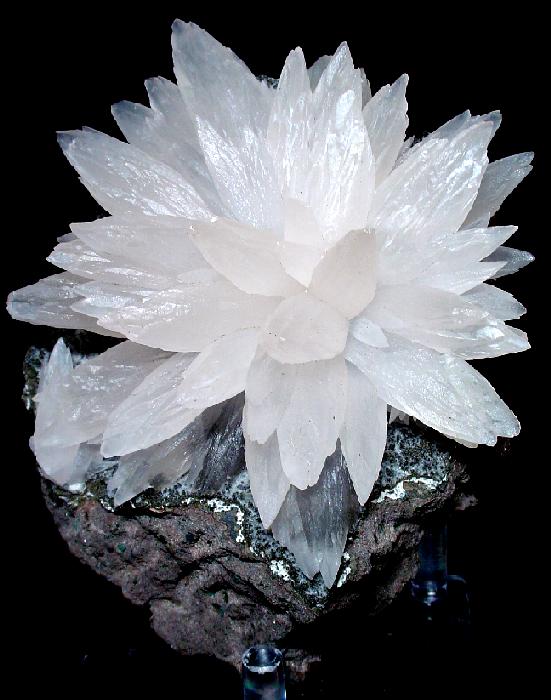|
Boundstone (rock)
A boundstone is a special type of carbonate rock in the Dunham classification. Description In the original classification by Dunham (1962), boundstones are defined as "carbonate rocks showing signs of being bound during deposition .. The signs of binding are specific and occur within the sample being classified". In the modified Dunham classification by Embry and Klovan (1971), boundstones in the sense of Dunham are subdivided into bafflestones, bindstones and framestone A framestone is a special type of carbonate rock in the Dunham classification The Dunham classification system for Carbonate minerals, carbonate sedimentary rocks was originally devised by Robert J. Dunham (1924–1994) in 1962, and subsequently ...s. The term "boundstone" is retained for authochthonous limestones in which the specific mode of organic binding cannot be recognized. Lokier and Al Nunaibi (2016) define boundstone as "an autochthonous carbonate-dominated rock in which there is any form of evide ... [...More Info...] [...Related Items...] OR: [Wikipedia] [Google] [Baidu] |
Carbonate Rock
Carbonate rocks are a class of sedimentary rocks composed primarily of carbonate minerals. The two major types are limestone, which is composed of calcite or aragonite (different crystal forms of CaCO3), and Dolomite (rock), dolomite rock (also known as dolostone), which is composed of Dolomite (mineral), dolomite (CaMg(CO3)2). They are usually Dunham classification, classified on the basis of texture and grain size. Importantly, carbonate rocks can exist as metamorphic and igneous rocks, too. When recrystallized carbonate rocks are Metamorphic rock, metamorphosed, marble is created. Rare igneous rock, igneous carbonate rocks even exist as Intrusive rock, intrusive carbonatites and, even rarer, there exists volcanic carbonate lava. Carbonate rocks are also crucial components to understanding Geological history of Earth, geologic history due to processes such as diagenesis in which carbonates undergo compositional changes based on kinetic effects. The correlation between this compo ... [...More Info...] [...Related Items...] OR: [Wikipedia] [Google] [Baidu] |
Dunham Classification
The Dunham classification system for Carbonate minerals, carbonate sedimentary rocks was originally devised by Robert J. Dunham (1924–1994) in 1962, and subsequently modified by Embry and Klovan in 1971 to include coarse-grained limestones and sediments that had been organically bound at the time of Deposition (geology), deposition. The ''modified Dunham Classification'' has subsequently become the most widely employed system for the classification of carbonate sedimentary rocks with 89% of workers currently adopting this system over the alternative Folk classification, Folk classification scheme History Original classification Robert J. Dunham published his classification system for limestone in 1962. The original Dunham classification system was developed in order to provide convenient depositional-texture based class names that focus attention on the textural properties that are most significant for interpreting the depositional environment of the rocks. The three criteri ... [...More Info...] [...Related Items...] OR: [Wikipedia] [Google] [Baidu] |
Bafflestone
Bafflestone is a type of carbonate rock. The Dunham Classification (Dunham, 1962) of limestones employed the term boundstone to encompass all carbonate rocks that exhibited any evidence of the original components being organically-bound together at the time of deposition. Embry & Klovan (1971Embry, A.F. and Klovan, J.E. (1971) A Late Devonian reef tract on Northeastern Banks Island, NWT. Bull. Can. Pet. Geol., 19, 730–781.) proposed the sub-division of the boundstone classification in order to reflect the different mechanisms of binding within these autochthonous carbonate sediments. The classification ''bafflestone'' was proposed to describe sediments that formed where organic baffling resulted in a reduction in flow and a consequent deposition of suspended material. However, even at the time of introducing the new classification, Embry & Klovan (1971), noted that the class ''bafflestone'' was highly-interpretive and, the mechanism of formation was difficult to prove requiring ... [...More Info...] [...Related Items...] OR: [Wikipedia] [Google] [Baidu] |
Bindstone
Bindstone is a special type of carbonate rock in the Dunham classification. The term did not appear in the original Dunham classification from 1962 and was introduced by Embry and Klovan 1971 in the modified Dunham classification. Description Embry and Klovan (1971) define bindstones as rocks that "[...] contain in situ, tabular or lamellar fossils which encrusted and bound sediment during deposition. [...] The matrix, not the in situ fossils, forms the supporting framework of the rock, and the fossils may form as little as 15 percent of the constituents of the rock." Wright (1991) uses bindstone as a synonym for boundstone, which is defined as a rock "[...] where the structure reflects the encrusting and binding action of plants or animals" Lokier and Al Nunaibi (2016) define bindstones as "autochthonous carbonate-dominated rock in which the original components of the supporting matrix were organically bound through stabilization of the sediment at the time of deposition." Pr ... [...More Info...] [...Related Items...] OR: [Wikipedia] [Google] [Baidu] |
Framestone
A framestone is a special type of carbonate rock in the Dunham classification The Dunham classification system for Carbonate minerals, carbonate sedimentary rocks was originally devised by Robert J. Dunham (1924–1994) in 1962, and subsequently modified by Embry and Klovan in 1971 to include coarse-grained limestones and .... Description The term "framestone" was not used in the original Dunham classification by Dunham (1962). It first appeared in the modified Dunham classification by Embry and Klovan (1971) where it is described as an autochthonous limestone having "in situ massive fossils which constructed a rigid three-dimensional framework during deposition. The in situ fossils therefore form the supporting framework of the rock, with matrix material occurring in the interstices between the fossils." Lokier and Al Junaibi(2016) define a framestone as "an autochthonous carbonate-dominated rock supported by a rigid organic framework developed at the time of deposition." ... [...More Info...] [...Related Items...] OR: [Wikipedia] [Google] [Baidu] |




